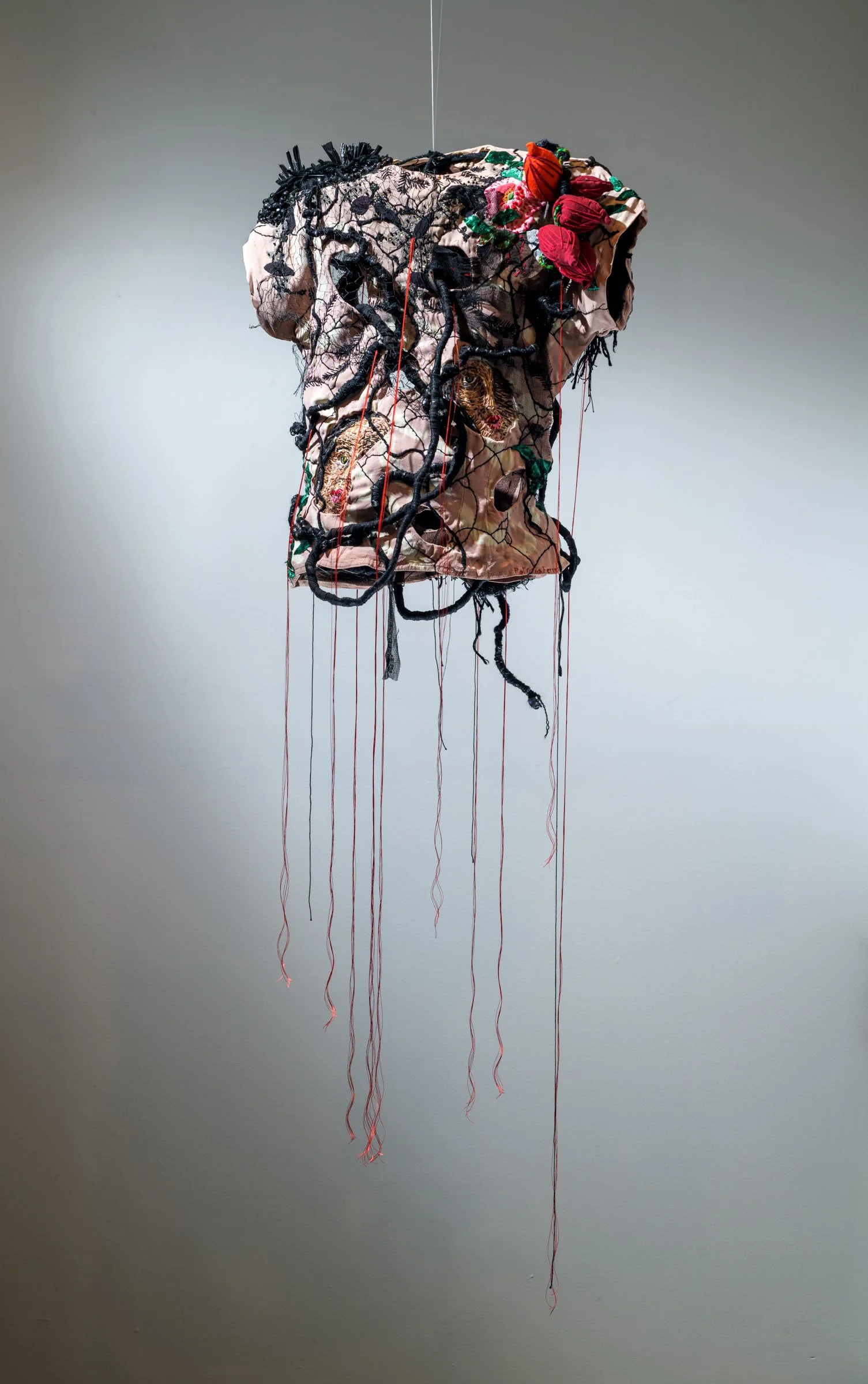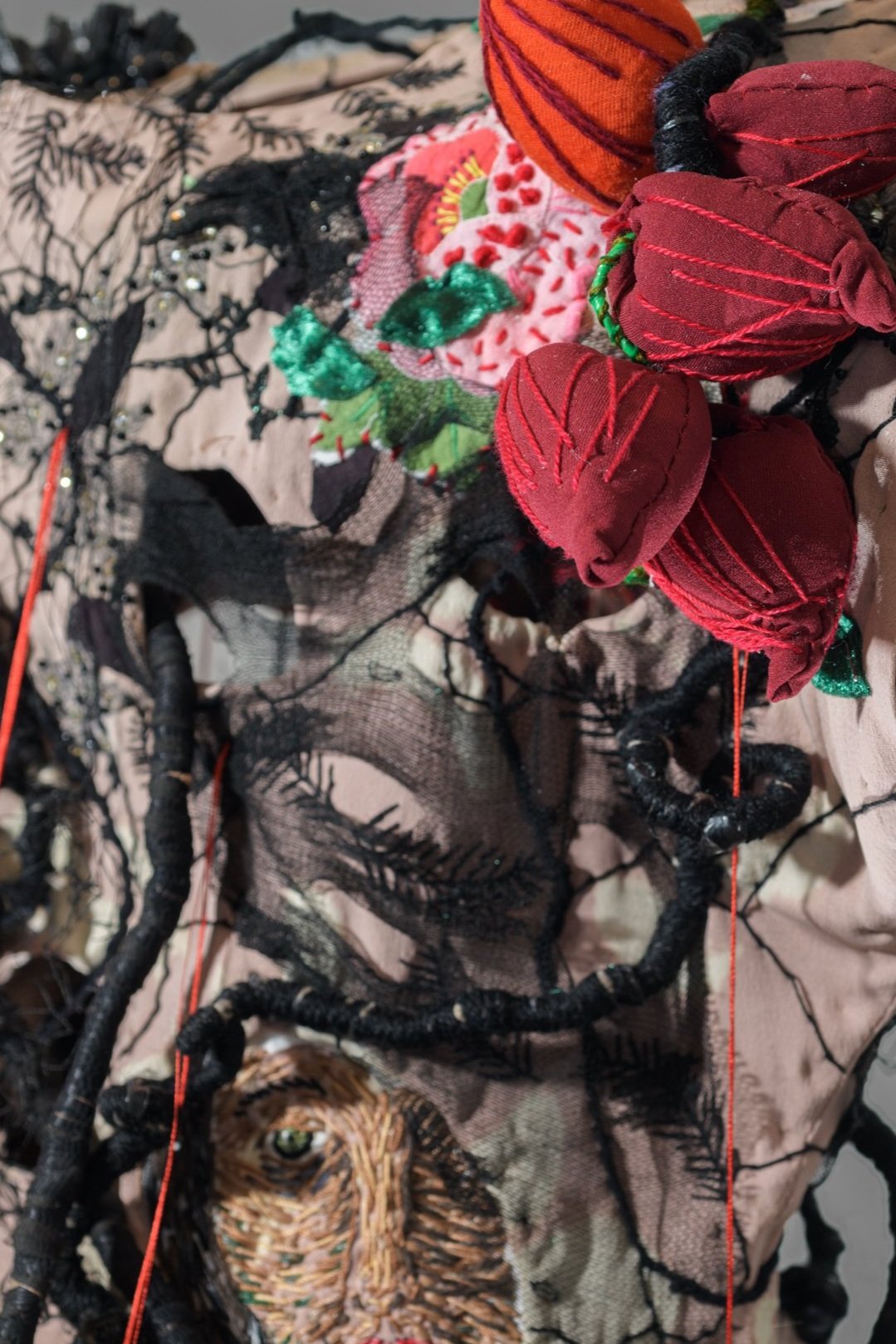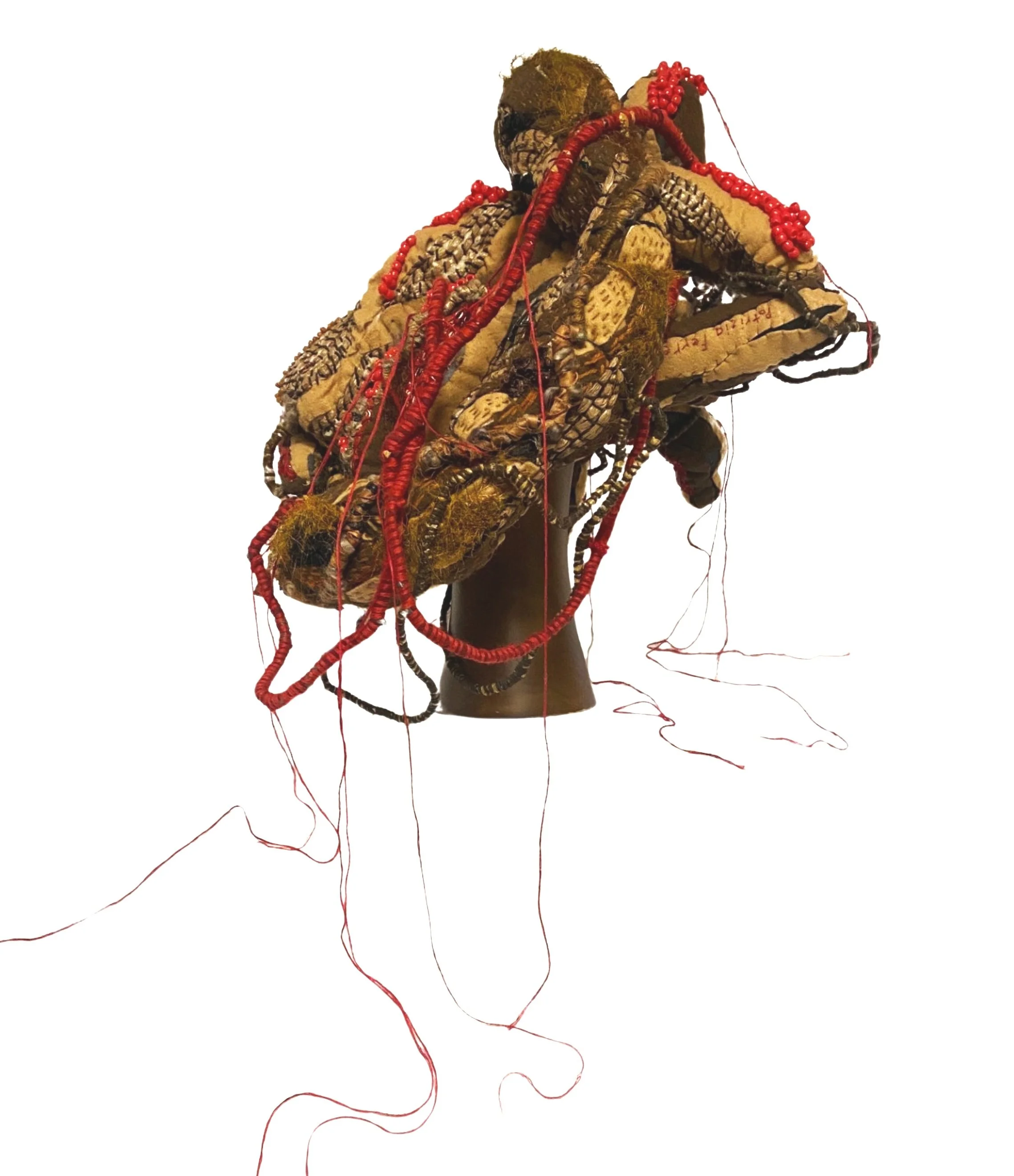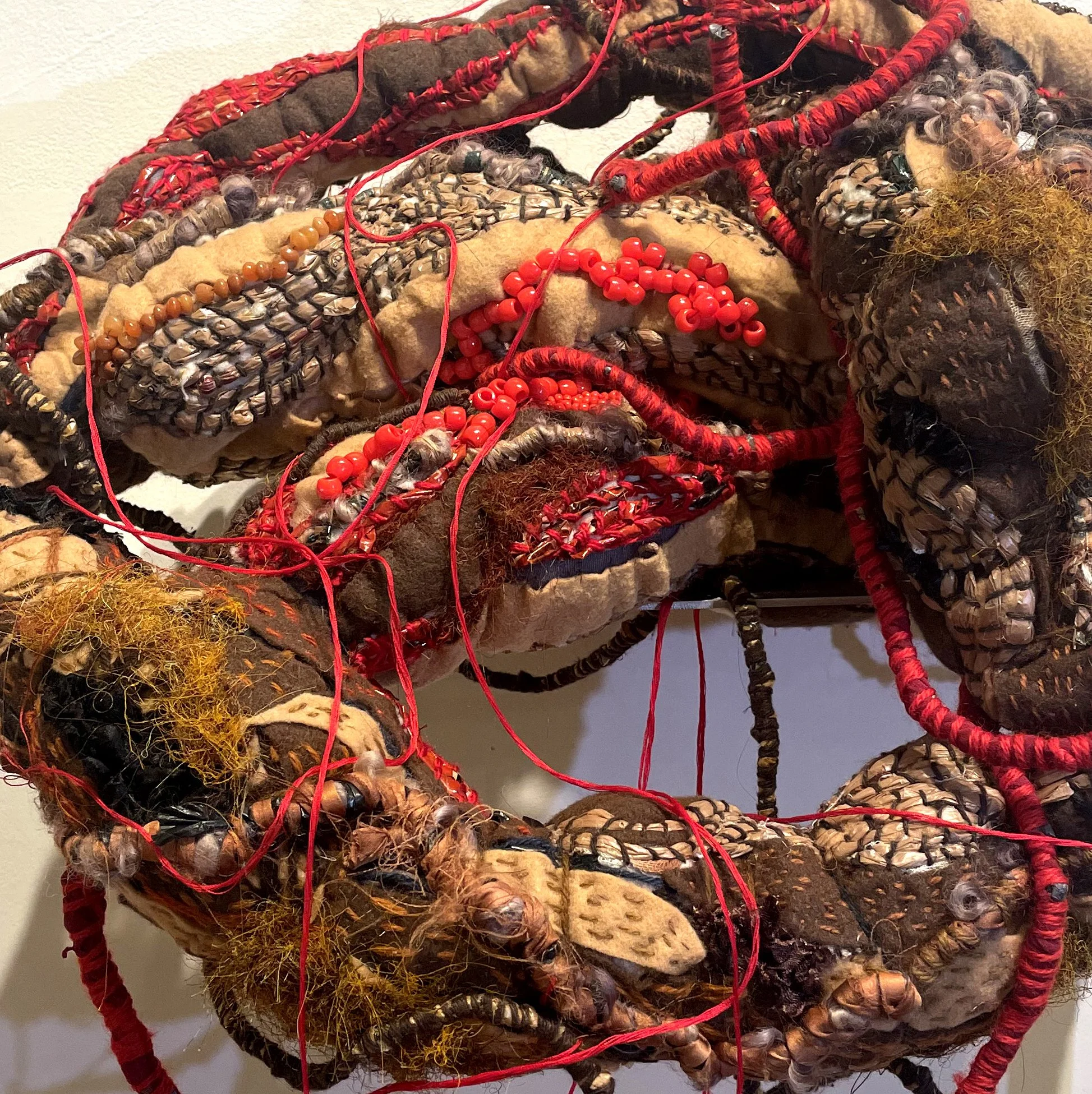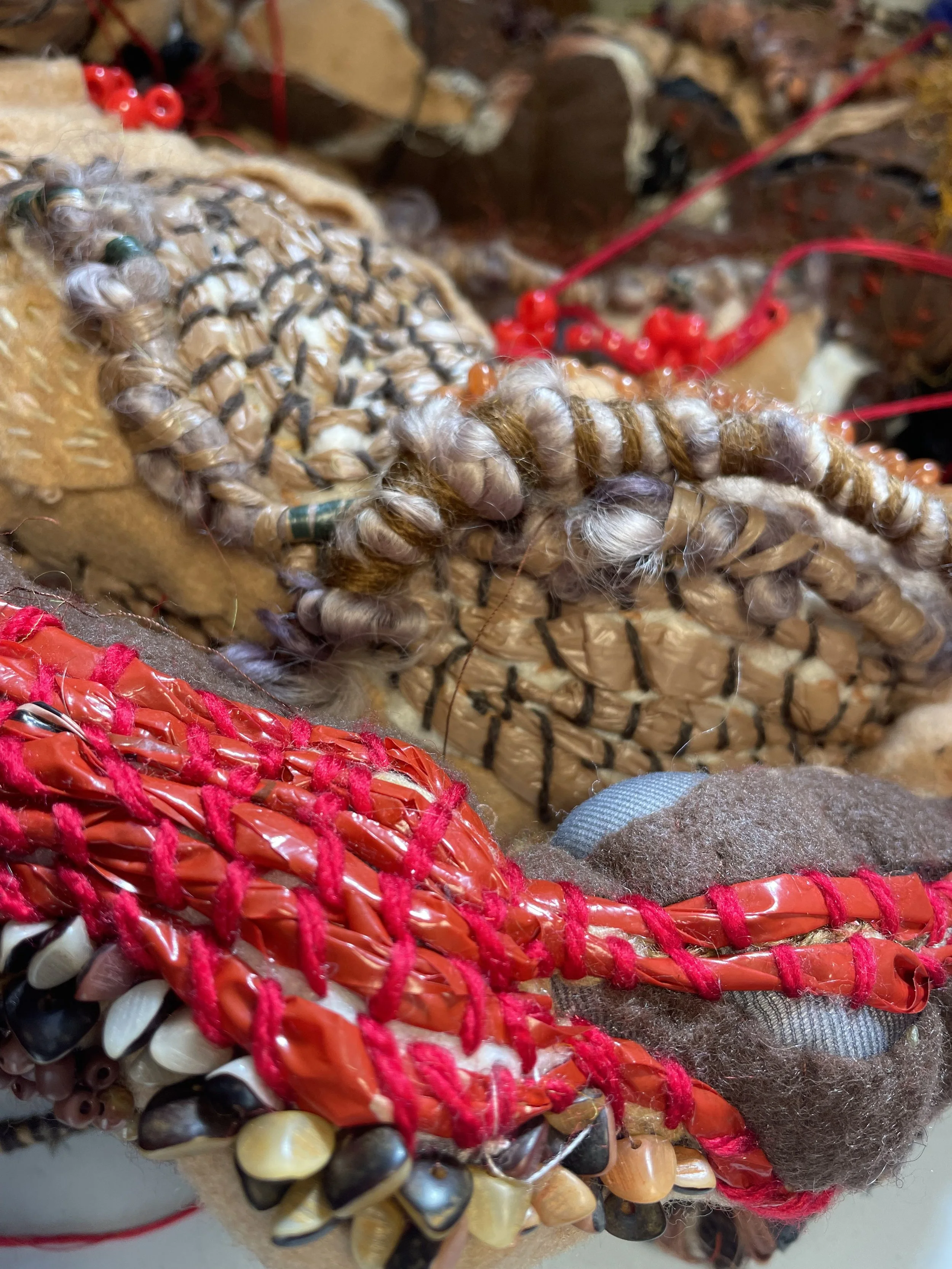THE HOME I NEVER KNEW: NI DE AQUÍ, NI DE ALLÁ
June 7 - November 1, 2024
Greenville Museum of Art | West Wing & Commons Galleries
Patrizia Ferreira
"“I hope to move people, to sensitize them about the beautiful world we live in. I hope to inspire them to pay attention and to take small actions. To slow down and observe what we have, what is lost and what may be lost.”
Our Ancestors
2022
fiber art
The Tree of Life
2022
fiber art
Entrails
2022
fiber art
ARTIST STATEMENT
As an artist, my main objective is to be a vehicle to develop awareness around certain topics. Very close to my heart are issues regarding the environment and my own personal immigrant story as a South American woman in the United States. My work is inspired by life and the idea that we are only a small part of a higher organism. I create art with this in mind. Nature is how I feel this higher being and, in my work, I am always striving to translate into images that which inspires me and connects me with this higher universe. While pursuing these higher values however there is a palpable struggle, a tension between different forces that coexist, and fight with each other. Central to my work is the employment of the most paradoxical of all materials, plastic. Working with the plastic debris of our society, incorporating yarn, thread, fabric remnants, heirloom textiles, and found waste, I get to reconcile, to stitch, to patch, to mend the world around me. Stitching the materials that were made by the robot, a product of today’s consumerist society, and replacing it with the human hand, our most ancestral tool, is an invitation to reflect and give life to that which causes us death. As an immigrant woman in the United States, I am in constant search for my “home.” I feel the need to dig into my past, to reinvent my homeland. The stories of women of the present and the past, in search of a better life and a better world, moving, adapting, are stitched into my work. Using embroidery and stitching, the same techniques employed since the dawn of time, I get to carry their voices into the future.
DECLARACIÓN DEL ARTISTA
As an artist, my main objective is to be a vehicle to develop awareness around certain topics. Very close to my heart are issues regarding the environment and my own personal immigrant story as a South American woman in the United States. My work is inspired by life and the idea that we are only a small part of a higher organism. I create art with this in mind. Nature is how I feel this higher being and, in my work, I am always striving to translate into images that which inspires me and connects me with this higher universe. While pursuing these higher values however there is a palpable struggle, a tension between different forces that coexist, and fight with each other. Central to my work is the employment of the most paradoxical of all materials, plastic. Working with the plastic debris of our society, incorporating yarn, thread, fabric remnants, heirloom textiles, and found waste, I get to reconcile, to stitch, to patch, to mend the world around me. Stitching the materials that were made by the robot, a product of today’s consumerist society, and replacing it with the human hand, our most ancestral tool, is an invitation to reflect and give life to that which causes us death. As an immigrant woman in the United States, I am in constant search for my “home.” I feel the need to dig into my past, to reinvent my homeland. The stories of women of the present and the past, in search of a better life and a better world, moving, adapting, are stitched into my work. Using embroidery and stitching, the same techniques employed since the dawn of time, I get to carry their voices into the future.
INTERVIEW WITH THE ARTIST | ENTREVISTA CON LA ARTISTA
Why did you pick fiber and found objects as your medium? I often say that fiber picked me. I grew up surrounded by women who valued and appreciated textiles. There were tablecloths and napkins reserved for special occasions. Passed on from previous generations, mended and hand-washed with care. Clothes were also items of reverence. My Italian grandma would travel back home and bring back dresses from my Italian cousins. Beautiful handmade dresses, made of the most covetable fabrics, velvet, silk taffeta, lace, linen. I would drool over them. I believe this early connection to the material has forever left a mark, imbuing my current work with deep connections with my own personal history and a different time. Textiles are fascinating. Their versatility is limitless. The fact that they can be rendered bi or tridimensional, flat or textured, glossy or matt, furry or laced, is for the artist in me an open door to infinite creations. Once I discovered I could imitate nature through texture, I was besotted. The use of found objects also has connections with my upbringing in Uruguay at a time of adversity. Uruguay was in the midst of a dictatorship that lasted 12 years. The first 11 years of my life I lived in a society of sparsity and make do. This instead of being a shortcoming became an endless source of creativity. I would watch my mom redecorate the house with scraps, re paint a bookshelf, create sculptural pieces and dialogues around objects in the house stimulating my imagination and inviting me to create with whatever there was laying around. Recycling, repurposing, reusing is in my DNA and I feel it as an integral part of my personal history and culture.
Is there any significance to the materials you use in each piece? Yes. I am drawn to materials and objects that have a deep resonance with my own personal history and the human experience. An object such as a garment, a tablecloth, or rug will lay in my studio collecting dust until I feel the compulsion to intervene it. I then begin a process of deconstructing and reconstructing to recreate and repair the world around me.
What correlation do you feel your art has to nature? Nature moves me. It touches me deeply. I see tons of parallels between my work and the way organisms work in nature, slowly, quietly, imperceptibly even. In this way I liken myself to a mollusk or seaweed or even moss, working to feel cracks, to heal and repair, stitch by stitch, small, tiny actions that when accumulated may become colossal.
Were there any difficulties you experienced while creating your pieces? Every piece I create poses a challenge. Each piece is a stepping to stone to the next. Currently ,I am in the process of creating large pieces (floor to ceiling), as well as pieces that may stand alone on the floor or hanging and interact with audiences. Also, the fact that I use untraditional materials and incorporate them into my work solely through stitches is an ongoing struggle which limits me but also provides unity to my work.
How have you reinvented the perspective of your homeland to fit in the South? This is a very difficult question I am not sure I can answer. Although I have lived in the USA since 2004, I feel like my experience as an immigrant in the USA is constantly morphing and changing. What doesn’t change is my sense of rootedness. This has been very important for me as I navigate my life away from “home”. It’s this strong sense of belonging, this sense of place, that gives meaning to the work I do and allows me to have a bit of an objective eye.
What was one memorable childhood experience from your culture? I recall a Summer when I was 8 years old, I was a very imaginative child. I loved stories of magical places, people with magical powers and the idea that objects possessed magic. I created a game with my cousins where we would scavenge random objects from the streets and collect them, developing a whole language of magical symbols. We would play that certain object (pebbles, glass bits, shells, twigs, flowers, metal bits, no plastic there wasn’t’ any at the time) would mean certain things and provide us with certain powers. It was such fun! And I could have played that game forever. Now, when I create, I feel I am constantly channeling that child who saw magic in the most mundane and insignificant of objects.
What made you more aware of the amount of waste in our society? Unfortunately, living in a consumerist society that favors immediacy and convenience over quality and experience has only accentuated my critical look on society. I see waste all around me. Plastic has expanded to literally be in every single product. Fast fashion has become conspicuous, and society can’t keep up with so much litter. A world bursting at the seams with garbage.

